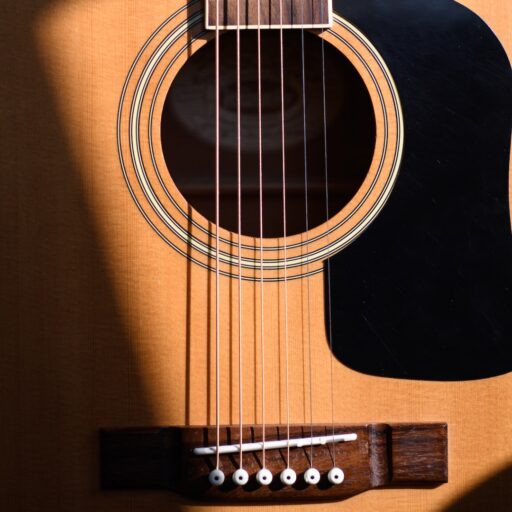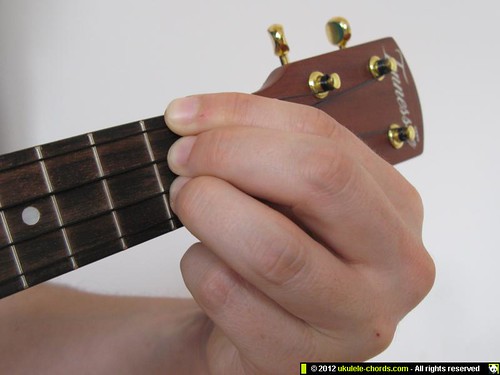Support our educational content for free when you purchase through links on our site. Learn more
How Do I Tune My Ukulele? 🎶 7 Expert Methods for Perfect Pitch (2025)
Tuning your ukulele can feel like chasing a jumping flea—frustrating, elusive, and sometimes downright baffling. We get it. Even seasoned players have wrestled with those tiny tuning pegs, trying to nail that iconic G4-C4-E4-A4 harmony. But what if we told you that mastering your ukulele’s tuning is less about luck and more about knowing how and with what to tune?
In this comprehensive guide, the Guitar Brands™ team unpacks 7 proven methods to get your ukulele singing in perfect pitch every time. From classic ear training tricks to the smartest digital tuners and apps, plus insider tips on troubleshooting common tuning nightmares, we’ve got you covered. Curious about why your new strings won’t hold a tune or how alternative tunings can unlock fresh sounds? Stick around—we’ll reveal all that and more.
Ready to stop guessing and start strumming with confidence? Let’s dive in!
Key Takeaways
- Standard ukulele tuning is G4-C4-E4-A4, with the unique “re-entrant” high G string giving the uke its signature bright sound.
- Seven tuning methods covered: ear tuning, clip-on digital tuners, smartphone apps, pitch pipes, tuning forks, piano reference, and alternative tunings.
- New strings need stretching and frequent tuning at first to hold pitch reliably.
- Always tune up to the note to avoid slipping and maintain stable tension.
- Troubleshooting tips include fixing slipping pegs, lubricating nut slots, and understanding environmental effects on tuning.
- Explore alternative tunings like baritone DGBE and slack key for new sonic adventures.
- Our top tuner picks include Snark SN6X and D’Addario Micro Headstock Tuners—perfect companions for every uke player.
👉 Shop Clip-On Tuners & Ukuleles:
- Snark SN6X Ukulele Tuner: Amazon | Guitar Center | Sweetwater
- D’Addario Micro Headstock Tuner: Amazon | Guitar Center | Sweetwater
- Lanikai LU-21 Soprano Ukulele: Amazon | Lanikai Official Website
Table of Contents
- ⚡️ Quick Tips and Facts: Your Ukulele Tuning Cheat Sheet
- 🎶 The Sweet Symphony of Strings: A Brief History of Ukulele Tuning Standards
- 🤔 Understanding Your Ukulele’s Voice: What’s “Standard” Anyway?
- 🛠️ The Anatomy of a Well-Tuned Uke: Strings, Pegs, and the Magic In-Between
- 🎯 Tuning Methods Galore! Discovering Your Perfect Pitching Partner
- 🌺 GCEA Standard Tuning: The Aloha Spirit’s Default and How to Master It
- 🚀 Beyond GCEA: Exploring Alternative Ukulele Tunings and Their Charms
- 😩 Troubleshooting Tuning Terrors: When Your Ukulele Just Won’t Cooperate
- ✅ Maintaining Your Ukulele’s Perfect Pitch: Tips for Lasting Harmony
- 🎸 Expert Advice from Guitar Brands™: Our Personal Tuning Secrets
- 🎉 Conclusion: Strumming Towards Perfectly Tuned Bliss
- 🔗 Recommended Links: Your Go-To Resources for Ukulele Mastery
- ❓ FAQ: Your Most Pressing Ukulele Tuning Questions Answered
- 📚 Reference Links: The Sources Behind Our Sound Advice
Here is the main body of the article, written according to your specifications.
⚡️ Quick Tips and Facts: Your Ukulele Tuning Cheat Sheet
Welcome, fellow strummers, to the ultimate guide on how to tune your ukulele! We’re the team at Guitar Brands™, and we’ve spent more time twisting tuning pegs than we’d care to admit. Before we dive deep into the rabbit hole of pitches, pegs, and plucking, let’s get you started with the essentials. Think of this as your pre-flight checklist before you take off into a sky of sweet, harmonious sound. Getting your uke in tune is the most crucial first step, and our comprehensive guide on ukulele tuning is the perfect place to start your journey.
Here’s a handy table to keep you on the right track:
| Concept | The Lowdown | Why It Matters |
|---|---|---|
| Standard Tuning | G-C-E-A (from top string to bottom) | This is the most common tuning, the one you’ll find in 99% of ukulele songs and tutorials. |
| The Mnemonic | “My Dog Has Fleas” | An easy way to remember the notes (G-C-E-A) when tuning by ear. Sing it! |
| String Numbers | 4-3-2-1 (G=4, C=3, E=2, A=1) | Tuners and tabs refer to strings by number. The G string (closest to your chin) is the 4th. |
| Re-entrant Tuning | The standard “High G” string is higher in pitch than the C string next to it. | This gives the ukulele its classic, bright, and jangly sound. 🏝️ |
| Tuning Direction | Lefty-Loosy, Righty-Tighty | Generally, turning a peg counter-clockwise (left) loosens the string (lower pitch), and clockwise (right) tightens it (higher pitch). |
Our Quickest Do’s and Don’ts:
- ✅ DO tune your ukulele every single time you pick it up. Seriously. Every time.
- ✅ DO stretch your new strings. They need a little tough love before they’ll hold a tune. (More on this later!)
- ❌ DON’T be afraid to use a digital tuner. Even the pros do! It’s about accuracy, not ego.
- ❌ DON’T crank the tuning pegs too fast. You could snap a string, and nobody wants that kind of drama.
🎶 The Sweet Symphony of Strings: A Brief History of Ukulele Tuning Standards
Ever wonder how those four little strings ended up with their specific notes? It’s a story that involves Portuguese sailors, Hawaiian royalty, and a whole lot of island spirit. The ukulele’s ancestor, the machete de braga, was brought to Hawaii in the late 1870s. The Hawaiians fell in love with the instrument, renaming it “ukulele” (which translates to “jumping flea”), and adapted its tuning to better suit their beautiful vocal harmonies.
While various tunings existed, the G-C-E-A tuning rose to prominence during the early 20th century. This “re-entrant” tuning, with its high G string, created a unique, cheerful sound that became synonymous with Hawaiian music. As the ukulele craze swept the United States, this standard, often called “C-Tuning,” became the global norm, a decision that cemented the instrument’s iconic voice for generations to come. For a deeper dive, the Ukulele Hall of Fame Museum offers a treasure trove of historical info.
🤔 Understanding Your Ukulele’s Voice: What’s “Standard” Anyway?
So, what does “standard tuning” actually mean? Let’s break it down. When we say your uke should be tuned to G-C-E-A, we’re talking about specific musical pitches.
- G4: The 4th string (closest to your chin).
- C4: The 3rd string. This is “Middle C” on a piano.
- E4: The 2nd string.
- A4: The 1st string (closest to the floor).
Notice something weird? The “G” string is actually a higher pitch than the “C” string next to it. This is called re-entrant tuning, and it’s the secret sauce to the ukulele’s bright, happy sound. It’s what makes a simple C chord sound so full and vibrant.
Some players, especially those coming from guitar, prefer a Low G tuning, where the G string is tuned an octave lower. This provides a more linear, guitar-like range of notes. It’s a fantastic option, but for starting out, stick with the classic High G. It’s the sound you know and love! This is a great instrument for those looking into our Acoustic Guitars section who might want something a bit smaller to start with.
🛠️ The Anatomy of a Well-Tuned Uke: Strings, Pegs, and the Magic In-Between
To be a tuning master, you must first know your weapon! Your ukulele’s ability to hold a tune depends on a few key components working in harmony.
- Headstock: This is at the top of the neck, where the magic happens.
- Tuning Pegs (or Machine Heads): These are the knobs you turn. They have gears inside that adjust the tension of the strings. This is a critical component! As one user on a Music Stack Exchange forum noted, a common cause of tuning trouble on cheaper instruments is “poor quality machine heads.” If your pegs feel loose, slip, or are hard to turn, they might be the culprit.
- Nut: The small, grooved piece of plastic or bone where the strings pass from the headstock to the fretboard. If the grooves are too tight, they can cause the string to “jump” in pitch.
- Strings: The lifeblood of your sound! Different materials (like nylon, fluorocarbon, or Aquila’s popular Nylgut) have different stretching properties.
- Bridge and Saddle: Located on the body, this is where the strings are anchored. The saddle (a small strip on the bridge) is another key point for intonation.
If you’re in the market for a new uke, our Guitar Buying Guide has tips on what to look for to avoid instruments with shoddy hardware.
🎯 Tuning Methods Galore! Discovering Your Perfect Pitching Partner
There’s more than one way to tune a uke! The best method for you depends on your environment, your ear, and your personal preference. Let’s explore the most popular options.
1. The Classic Ear Test: Tuning by Relative Pitch 👂
This is the old-school way, and it’s a fantastic skill to develop. The catch? You need one string to be in tune first (a reference pitch).
How it works:
- Get your A string (the bottom one) in tune using a reference pitch from a piano, another instrument, or an online tone generator.
- Tune the E string (2nd string): Press down on the 5th fret of the E string. Pluck it. Now pluck the open A string. The two notes should sound identical. Adjust the E string’s tuning peg until they match.
- Tune the C string (3rd string): Press down on the 4th fret of the C string. Pluck it, then pluck the open E string. Adjust the C string’s peg until they match.
- Tune the G string (4th string): Press down on the 2nd fret of the G string. Pluck it, then pluck the open A string. Adjust the G string’s peg until they match.
- Pros: ✅ Develops your musical ear. ✅ No batteries required!
- Cons: ❌ Can be tricky for beginners. ❌ If your first note is wrong, your whole uke will be out of tune with everyone else.
2. Digital Tuners: Your Pocket-Sized Tuning Buddy 📱
Clip-on electronic tuners are a ukulele player’s best friend. They work by sensing the vibration of the instrument, making them super accurate even in a noisy room.
| Tuner Feature | Our Rating (1-10) | Why It’s Great |
|---|---|---|
| Accuracy | 10/10 | Senses vibrations directly from the headstock for pinpoint precision. |
| Ease of Use | 9/10 | Clip it on, pluck a string, and the screen tells you if you’re sharp (too high) or flat (too low). |
| Visibility | 8/10 | Most have bright, colorful LCD screens that are easy to read in any light. |
| Portability | 10/10 | Small enough to live in your ukulele case forever. |
Brands like Snark and D’Addario make some of the most popular and reliable clip-on tuners on the market.
👉 Shop for Clip-On Tuners on:
- Snark SN6X Ukulele Tuner: Amazon | Guitar Center | Sweetwater
- D’Addario Micro Headstock Tuner: Amazon | Guitar Center | Sweetwater
3. Tuning Apps: Smart Solutions for Smart Devices 📲
Don’t have a clip-on tuner? No problem! Your smartphone is all you need. Tuning apps use your phone’s built-in microphone to listen to the pitch. The YouTube tutorial “How to tune a UKULELE for total beginners” by Andy Guitar recommends the free BOSS Tuner app, which is a fantastic choice. Another great option mentioned in the “Grab Your Uke!” video is The Ukulele App.
- Pros: ✅ Super convenient. ✅ Often free!
- Cons: ❌ Can be difficult to use in a noisy environment as it relies on a microphone.
4. Pitch Pipes and Tuning Forks: Old School Cool 🎶
Before apps and digital tuners, there were pitch pipes and tuning forks. A pitch pipe has four reeds that produce the G, C, E, and A notes when you blow into them. A tuning fork produces a single reference tone (usually A4) that you use to tune your A string, and then you tune the rest of the uke relative to that. They’re fun, retro, and a great way to train your ear.
5. Tuning with a Piano or Keyboard: A Grand Approach 🎹
If you have a piano or keyboard handy, you have a perfect reference tuner at your fingertips. Simply match the sound of your open strings to the corresponding keys on the piano.
- G String -> G above Middle C
- C String -> Middle C
- E String -> E above Middle C
- A String -> A above Middle C
🌺 GCEA Standard Tuning: The Aloha Spirit’s Default and How to Master It
Alright, let’s get down to business. Here is your step-by-step guide to achieving perfect GCEA tuning with a digital tuner, the most common and reliable method for beginners.
- Find a Quiet Spot: Give your tuner a fighting chance by minimizing background noise.
- Clip It On: Attach your clip-on tuner to the headstock of your ukulele. Turn it on and make sure it’s set to “Ukulele” or “Chromatic” mode.
- Start with the G String (4th String): Pluck the top string (the one closest to your face). The tuner’s screen will display the note it hears.
- Adjust the Pitch:
- If the tuner says the note is flat (b), it’s too low. You need to tighten the string. Turn the corresponding tuning peg slowly (usually clockwise) until the tuner’s needle is centered and the display shows a “G”.
- If the tuner says the note is sharp (#), it’s too high. You need to loosen the string. Turn the peg slowly (usually counter-clockwise) until the pitch drops to a “G”.
- Repeat for the C String (3rd String): Pluck the next string down and adjust its peg until the tuner shows a perfect “C”.
- Repeat for the E String (2nd String): Pluck the next string and adjust until you get a perfect “E”.
- Repeat for the A String (1st String): Pluck the bottom string and adjust for a perfect “A”.
- Double-Check: Go back and check all four strings again. Adjusting the tension on one string can slightly affect the others.
For a fantastic visual walkthrough, the video from Andy Guitar we’ve featured below is a brilliant guide for beginners. Check it out!
🚀 Beyond GCEA: Exploring Alternative Ukulele Tunings and Their Charms
Once you’ve mastered standard tuning, a whole new world of sound awaits! Alternative tunings can change the entire mood and character of your ukulele.
Baritone Ukulele Tuning (DGBE): A Deeper Dive
The baritone is the largest of the common ukulele sizes, and it boasts a deep, mellow tone. It’s tuned D-G-B-E, exactly like the top four strings of a guitar. This makes it an incredibly easy transition instrument for guitar players. If you’re a guitarist looking to dip your toes into the uke world, our Guitar Brand Guides can help you find a brand you already love that also makes great ukuleles, like Fender or Martin.
D-Tuning (ADF#B): The Bright and Breezy Alternative
This tuning is one step higher than standard GCEA. It’s often called “Soprano Tuning” and was very popular in the 1920s and ’30s. It gives your ukulele an even brighter, snappier sound, perfect for old-timey and folk music.
Slack Key and Other Open Tunings: Unlocking New Sounds
“Slack key” refers to a variety of open tunings where the strings are loosened, or “slacked,” to create beautiful, resonant chords with open strings. These tunings are a hallmark of Hawaiian music and can open up incredible new melodic possibilities.
😩 Troubleshooting Tuning Terrors: When Your Ukulele Just Won’t Cooperate
Is your ukulele refusing to stay in tune? Don’t smash it! (We’ve been tempted, trust us). The problem is usually one of a few common culprits.
New Strings Blues: Why Fresh Strings Go Out of Tune Fast 😩
This is the #1 issue for new players. You put on a fresh set of strings, tune them perfectly, and five minutes later, they’re flat again. What gives? Nylon strings need to stretch! It’s completely normal.
How to Speed Up the Process:
- Tune the string up to its correct pitch.
- Gently pull the string up away from the fretboard, giving it a little stretch.
- The pitch will have dropped significantly. Tune it back up.
- Repeat this process a few times for each string. After a day or two of playing and re-tuning, they will settle in and hold their pitch much more reliably.
Slipping Pegs and Sticky Situations: Mechanical Issues Explained 🛠️
If your strings are settled but the uke still won’t stay in tune, look at the hardware. As highlighted on a music forum, a key reason for tuning difficulty is that on cheap ukuleles, the parts are often low quality and just “knocked them out at speed.” The advice given is sound: if you bought it from a shop, take it back. A ukulele, “even if it’s cheap it should be tunable or it is not fit for purpose.”
- Slipping Pegs: Some tuning pegs have a small screw on the end. If it’s too loose, the gear can slip. Try tightening it just a tiny bit with a screwdriver.
- “Jumping” Pitch: If you turn the peg and nothing happens, then suddenly the pitch jumps way too high, the string is likely binding in the nut slot. You can solve this by rubbing a little graphite (from a pencil lead) into the nut slot to lubricate it.
Intonation Frustrations: When Frets Don’t Play Nice 📏
Here’s a real head-scratcher: you tune your open strings perfectly, but when you play a chord up the neck, it sounds awful. This is an intonation problem. It means the distance between the nut, the frets, and the saddle isn’t quite right, causing fretted notes to be out of tune. This is, unfortunately, a common issue on very inexpensive instruments and is difficult to fix without a professional luthier.
Environmental Factors: Humidity and Temperature Tango ☀️💧
Your ukulele is made of wood, which is a natural material that expands and contracts with changes in temperature and humidity. Taking your uke from a cold, dry house to a warm, humid beach will absolutely affect its tuning. Always let your instrument acclimate to a new environment for a few minutes before a final tuning.
✅ Maintaining Your Ukulele’s Perfect Pitch: Tips for Lasting Harmony
A happy uke is a well-tuned uke. Here’s how to keep it that way.
- Tune Every Time: We’ve said it before, and we’ll say it again. Make it the first thing you do when you pick it up and the last thing you do before you put it down.
- Wipe Down Your Strings: After playing, wipe your strings with a clean, dry cloth to remove oils and dirt that can deaden the sound and affect tuning stability.
- Change Strings Regularly: Old, worn-out strings won’t hold their pitch. How often you change them depends on how much you play, but a fresh set every few months is a good rule of thumb. We’re big fans of Aquila Nylgut strings for their warm tone and stability.
- Store It Properly: Don’t leave your ukulele in a hot car or a damp basement. A good case or gig bag provides protection from both physical damage and environmental changes.
🎸 Expert Advice from Guitar Brands™: Our Personal Tuning Secrets
Here at the shop, we’ve seen it all. Our lead tech, Mike, loves to tell the story of his first ukulele, a cheap soprano he bought at a tourist shop. “It was impossible to tune,” he says. “I’d get one string right, and by the time I got to the fourth, the first one was already flat again. I almost gave up!” This echoes the advice from the forums perfectly—sometimes the instrument itself is the problem. He eventually upgraded to a Lanikai LU-21 Soprano, the same model recommended in the “Grab Your Uke!” video, and the difference was night and day.
Here’s our #1 pro tip that solves a ton of problems:
Always tune UP to the note.
What does this mean? If your string is sharp (too high), loosen it so it’s well below the target note. Then, slowly tighten it back up to the correct pitch. This ensures the gear in the tuning peg is fully engaged and helps prevent the string from slipping flat. It’s a simple trick that makes a world of difference.
🎉 Conclusion: Strumming Towards Perfectly Tuned Bliss
So, there you have it — the full symphony of ukulele tuning wisdom from the Guitar Brands™ team! Whether you’re a newbie struggling to get those G4, C4, E4, and A4 notes to sing in harmony or a seasoned player exploring alternative tunings, tuning your ukulele is the foundation of every great performance.
Remember Mike’s story about his first frustrating uke? It’s a classic tale of how a poorly made instrument can turn tuning into a nightmare. The good news? With the right tools—like a Snark SN6X clip-on tuner or the The Ukulele App—and a little patience stretching those new strings, you’ll be tuning like a pro in no time.
And if you ever find your tuning pegs slipping or your strings refusing to hold pitch, don’t despair. Sometimes it’s the instrument, sometimes it’s the environment, and sometimes it’s just the strings needing a little TLC. Our pro tip? Always tune up to the note to keep your strings tight and your sound sharp.
So, are you ready to stop guessing and start strumming with confidence? Your ukulele’s perfect pitch awaits. Now go forth, tune up, and let the island vibes flow! 🌺🎶
🔗 Recommended Links: Your Go-To Resources for Ukulele Mastery
Ready to gear up? Here are some of the best tools and resources we recommend for tuning and playing your ukulele like a champ:
-
Snark SN6X Ukulele Tuner:
Amazon | Guitar Center | Sweetwater -
D’Addario Micro Headstock Tuner:
Amazon | Guitar Center | Sweetwater -
Lanikai LU-21 Soprano Ukulele:
Amazon | Lanikai Official Website -
Aquila Nylgut Strings:
Amazon | Sweetwater -
Recommended Books for Ukulele Beginners:
❓ FAQ: Your Most Pressing Ukulele Tuning Questions Answered
What is the standard tuning for a ukulele?
The standard tuning for a soprano, concert, and tenor ukulele is G4-C4-E4-A4 (from the top string closest to your face to the bottom string). This is known as re-entrant tuning, where the G string is pitched higher than the C string, giving the ukulele its signature bright and cheerful sound. Baritone ukuleles use a different standard tuning, D3-G3-B3-E4, which matches the top four strings of a guitar.
How often should I tune my ukulele?
You should tune your ukulele every time you pick it up to play. Nylon strings stretch and settle, and environmental factors like temperature and humidity cause pitch drift. Even if you just tuned 10 minutes ago, a quick check ensures your sound stays crisp and pleasant. For new strings, expect to tune frequently during the first few days as they stretch.
Can I use a guitar tuner for my ukulele?
✅ Yes! Most modern guitar tuners have a chromatic mode that detects any pitch, making them perfectly suitable for ukuleles. However, clip-on tuners designed specifically for ukuleles (like the Snark SN6X) often have presets optimized for the ukulele’s higher pitch range and re-entrant tuning, making tuning faster and easier.
What are common ukulele tuning mistakes to avoid?
- Tuning down to the note: Always tune up to the target pitch to keep the string tension stable and prevent slipping.
- Ignoring new string stretch: New strings need gentle stretching and frequent tuning initially.
- Over-tightening strings: This risks snapping strings and damaging your instrument.
- Using low-quality tuners or ignoring peg quality: Cheap tuners or slipping pegs can cause frustration and inaccurate tuning.
- Not tuning in a quiet environment: Background noise can fool microphone-based tuners and your ear.
How do I fix slipping tuning pegs?
If your tuning pegs slip, try tightening the small screw on the peg’s end slightly. If that doesn’t help, consider upgrading to better-quality machine heads or consulting a luthier. Proper peg maintenance is key to stable tuning.
What’s the difference between high G and low G tuning?
High G (re-entrant) tuning has the G string tuned higher than the C string, producing the classic ukulele sound. Low G tuning lowers the G string an octave, extending the instrument’s range and giving a fuller, guitar-like tone. Low G is popular among advanced players and those seeking a deeper sound.
📚 Reference Links: The Sources Behind Our Sound Advice
- Ukulele Hall of Fame Museum – History of the Ukulele
- Music Stack Exchange – Difficulties tuning C string
- Grab Your Uke! YouTube Channel
- Snark Official Website
- D’Addario Official Website
- Lanikai Ukuleles Official Website
- Reddit discussion: (I’m a beginner) Unable to tune my Ukulele to g4 C4 E4 A4? : r/ukulele
We hope this guide has tuned up your ukulele skills and tuned in your curiosity! Ready to strum your way to island bliss? Let’s get tuning! 🌺🎸






